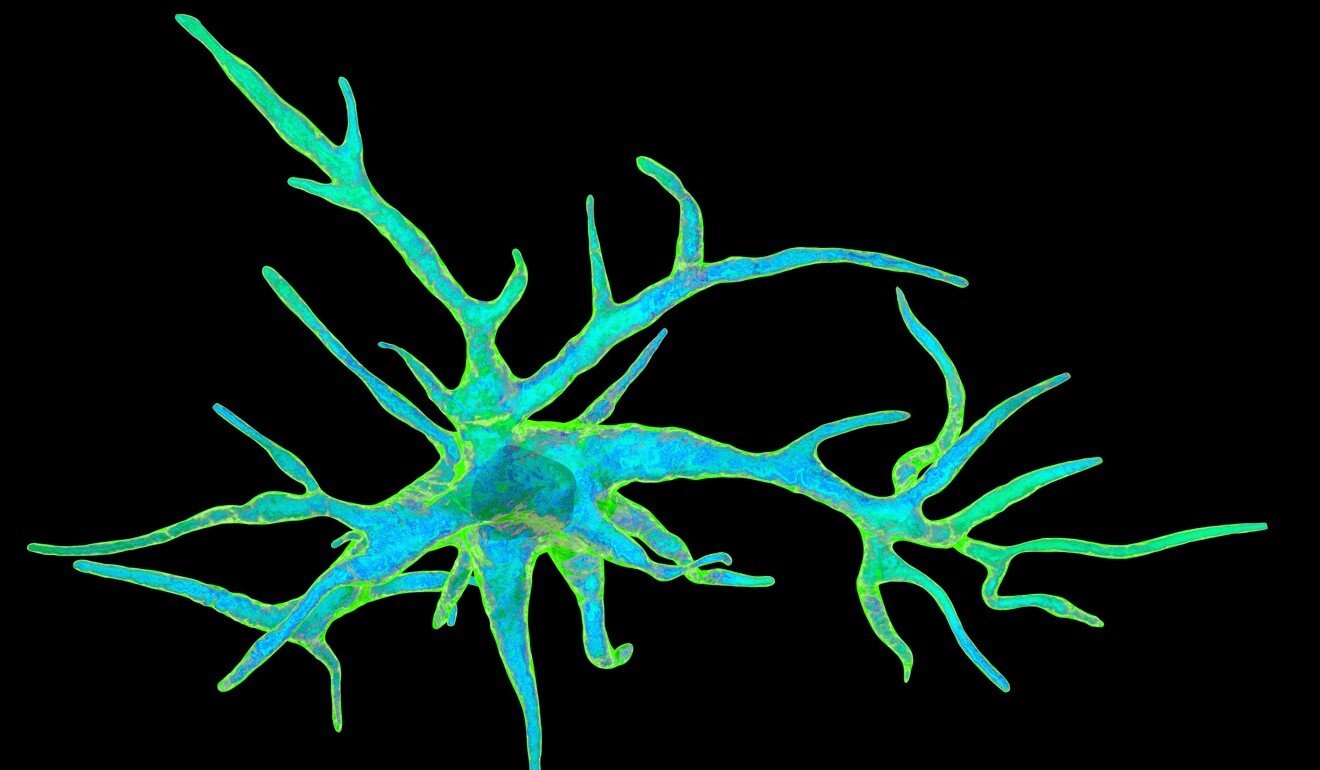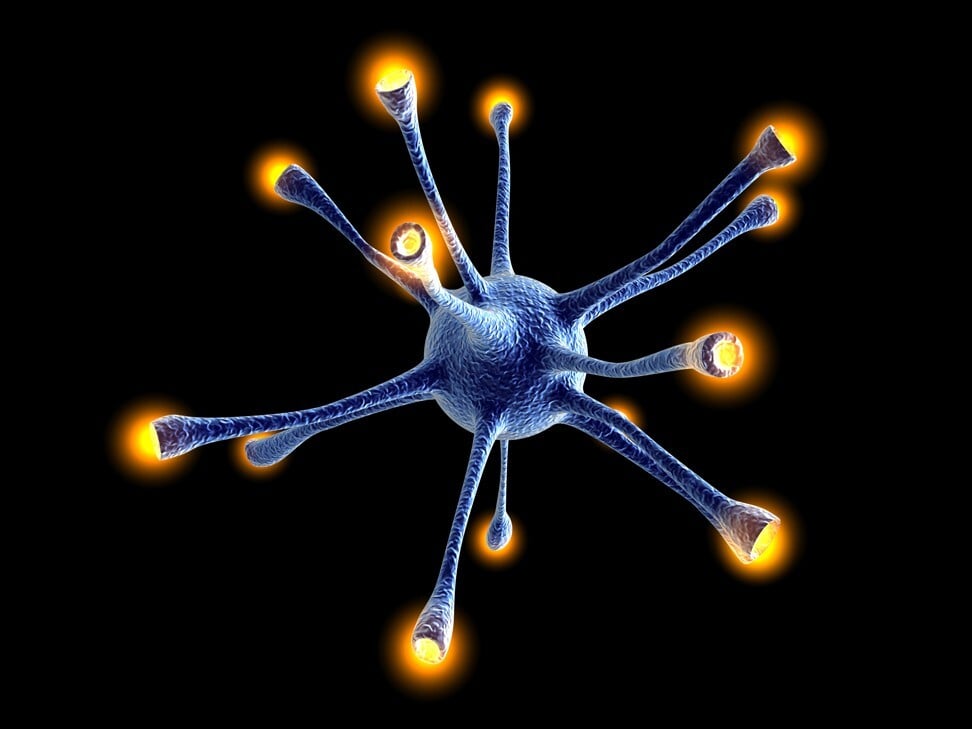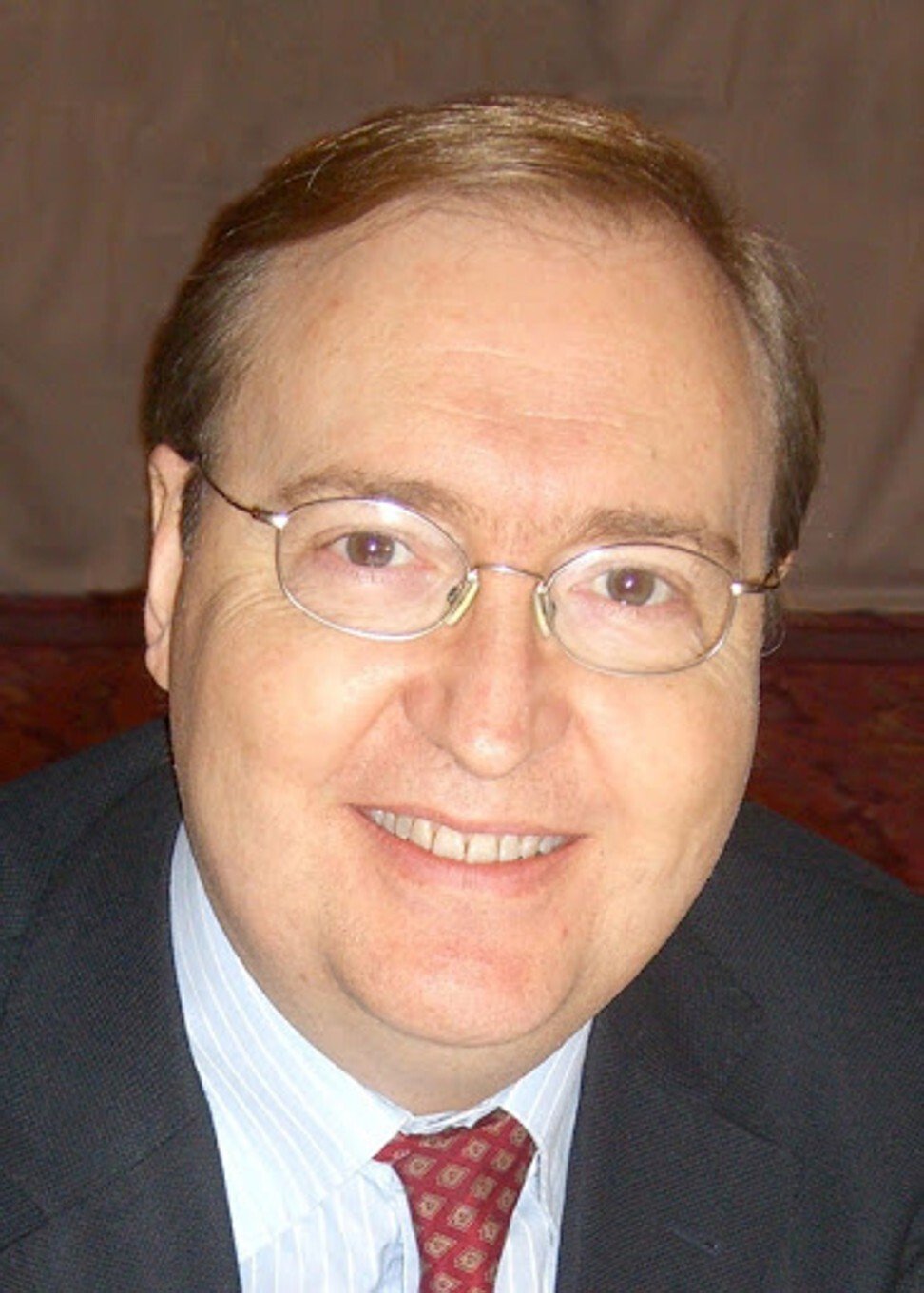
Parkinson’s gene editing breakthrough in mice offers hope for patients – their damaged neurons could be replaced
- Scientists have discovered a way to convert mouse brain cells into neurons, replacing those damaged by disease
- This could lead to a one-step strategy to treat a number of degenerative diseases that affect millions of people
Scientists have discovered a “one-step strategy” offering hope for treating Parkinson’s disease and other degenerative illnesses after converting mice brain cells into functioning neurons, they reported this week.
The motor defects associated with Parkinson’s are largely caused by the loss of dopamine-emitting neurons – electrically active cells that communicate with others – in the brain. A team of US- and China-based researchers used genome editing to convert a different type of brain cell – glial cells called astrocytes, for their star shape – into neurons, slowing the loss of dopamine and restoring motor functions in injured mice.
“We’re now rebuilding the whole pathway,” Xiang-Dong Fu, a professor at the University of California, San Diego, said. “That becomes a very promising approach to turn non neuronal cells into neurons to replace those lost ones.”

Researchers were able to convert astrocytes – a type of brain cell similar to neurons – in the part of the brain where Parkinson’s causes neuron loss into dopamine-emitting neurons by removing an RNA-binding protein called PTBP1.

“We stumbled into this phenomenon,” said Fu, a cellular and molecular biologist who studies RNA, the molecule that codes DNA. “When you deplete this protein, practically any cell we tested became neurons.”
The researchers performed studies on 2-month-old and year-old mice – the human equivalent of testing 20-year-olds and 60-year-olds.

While the cell conversion was highly successful in the younger mice, the authors reported an “age-related decrease” of success in older animals. “The ageing issue is a big problem,” he said. “Not only is the disease age-dependent, but a lot of things are age dependent, including the ability to switch cell fate.”
Aerial yoga at 75, Pilates and diving too – he’s ageing well
Another challenge is increasing the effectiveness of the cell conversion rate. Ernest Arenas, a professor of molecular neurobiology at the Karolinska Institute in Sweden, wrote in a linked editorial that 60 to 65 per cent of the infected astrocytes did not convert to become neurons. “This percentage must decrease,” he said.
“Eventual application of our approach to humans will need to overcome many obstacles,” the authors wrote, noting that in addition to age-related limits, more research about potential side effects of the treatment as well as the impact of astrocyte depletion on brain function would need to be done.

Fu cautioned that applying the cell conversion technique to humans was still a distant possibility, and that additional research in larger animals such as rats and monkeys would be needed first.
“This mouse study is just the beginning,” he said. “It’s the proof of a concept. Clearly we cannot get overexcited and just say, ‘Tomorrow, let’s shoot these things into human brains,’ and then the next day everybody’s fine,” he added. “That would be too magic.”

.png?itok=arIb17P0)